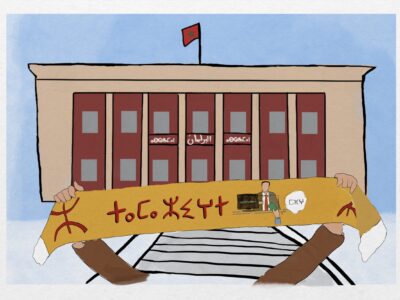
Screenshot of the report.
How are digital resources being used to preserve and revitalize indigenous languages in Australia? What are some of the challenges and strategies employed to mitigate risks for communities using these digital resources? These are some of the questions addressed in a new report called “Angkety Map”, which is a word from the Anmatyerr language meaning “many stories”.
First Languages Australia, an organization that supports Aboriginal and Torres Strait Islander communities with all facets of language preservation and revitalization, released this summary following a 15-month project that collected the experiences of language activists of using digital technologies to provide learning and revitalization opportunities for their communities.
Researcher Ben Foley worked closely with the First Languages Australia team to survey and interview advocates during several language and technology events throughout the country, such as Puliima, the National Languages and Technology Conference held in Melbourne, and Ngirrma Puwal Pukang, the Queensland State Languages Conference held in Cairns. Online surveys were also distributed to cast a wider net to collect information from individuals that did not attend these events, and phone interviews were conducted with language centers, software developers, and other activists running local language projects.
These conversations highlighted resources and content created by local communities, such as:
- Computer programs and applications for language documentation, recording, annotation, archiving
- Mobile/tablet apps (wordlists, dictionaries, music games, learning games, learning environments)
- Interactive whiteboard resources
- Multimedia CD-ROMs or DVDs
- Websites and web applications (e.g. YouTube, dictionary sites, online learning sites, etc.)
- Interactive dictionaries, word or sound lists, phrase books, flash cards
- eBooks
- Computer games
- Radio programs and audio podcasts
Many of these examples are highlighted in the report as case studies of innovative methods to use technology for language learning and revitalization.
First Languages Australia hopes that the report will help guide policymakers in deciding funding priorities as well as facilitate discussions among language communities to help maximize opportunities to utilize technology, reduce duplication, and address potential challenges when applying digital resources.
Download the summary report here.



